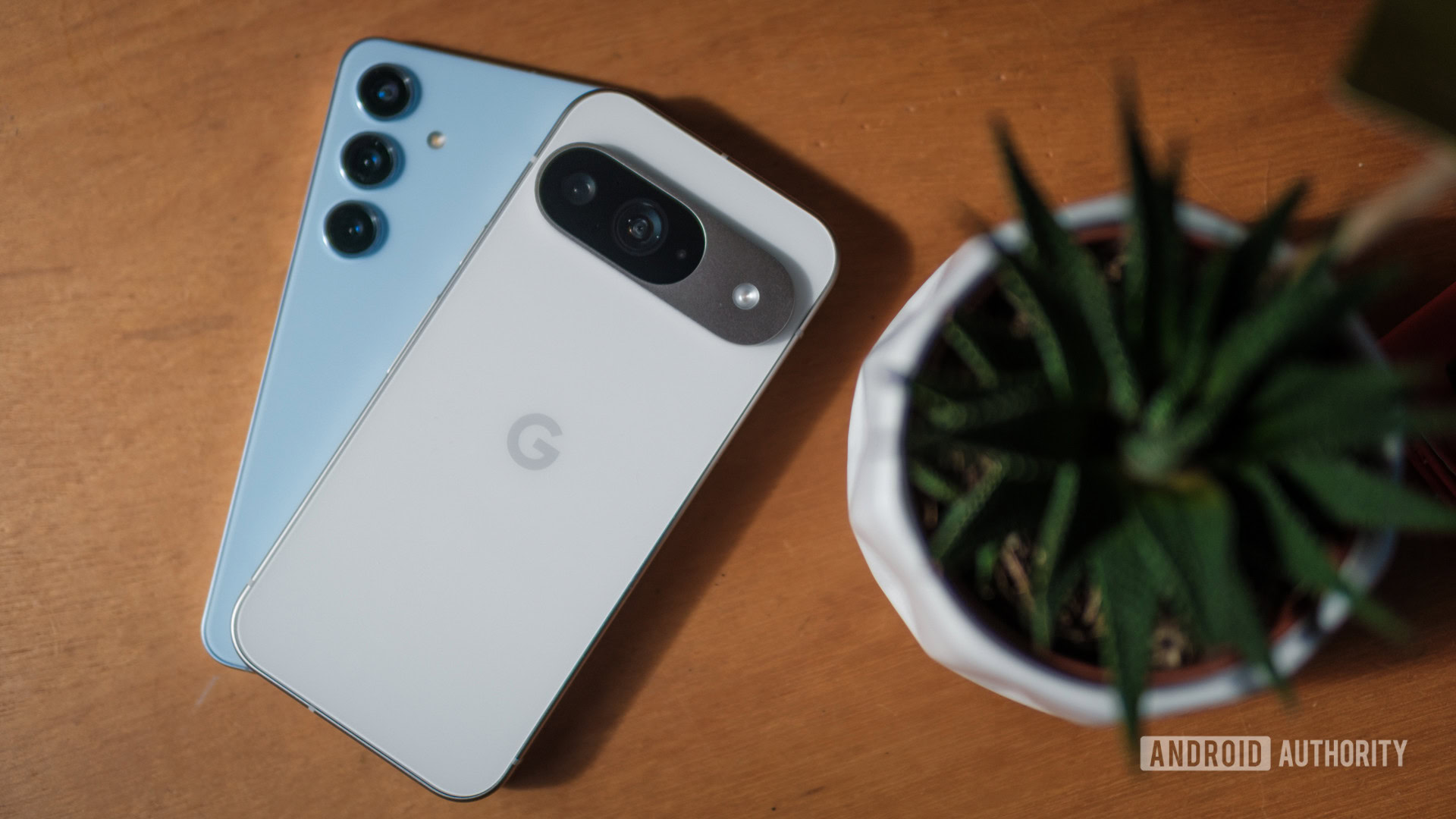Affiliate links on Android Authority may earn us a commission. Learn more.
Don't fear the Exynos: I want one in my Samsung Galaxy S25
Published onOctober 12, 2024
Peek inside the Samsung Galaxy S24 FE, and you’ll spot an Exynos 2400e processor. While hardly remarkable for global audiences, Exynos on US soil is somewhat of a rarity — you’ll have to go back to the Galaxy Note 5 and S6 era for the chip’s previous appearances.
The US is home turf for Qualcomm’s Snapdragon, and while it might be considered the premium option for Android smartphones, could the S24 FE open the door to a bigger return to Exynos in the US? Only Samsung knows for sure, but such a move has a few important things going for it.
Would you buy an Exynos Galaxy S25, if it kept prices the same?
Exynos has the performance

We’ve long benchmarked Samsung’s chips against Qualcomm’s, and although the latter have consistently come out on top in recent years, we know that classic performance metrics don’t matter quite as much as they once did. Google’s Pixel series, with its custom Tensor processor, is a prime example of this. The Tensor G4 inside the Pixel 9 series benchmarks some way behind the best in the business, but that hardly matters when it’s still fast enough to run your most important apps and brings unique features in the form of bespoke software.
Still, we benchmarked the Exynos 2400e and found it to be hot on the heels of the regular Exynos 2400, which is a fine chip in the Galaxy S24 series and puts up a solid fight against the best from Apple and Qualcomm. In fact, it outperforms Google’s Tensor in CPU and GPU benchmarks, so it is certainly no slouch. The issue is more one of perception than actual performance, owing to years of Exynos playing second fiddle to Snapdragon.
Exynos doesn't quite keep up with Snapdragon, but it's still close to Apple for gaming and well ahead of Tensor.
Of course, what makes Tensor stand out is Google’s AI accelerator hardware, which powers its unique AI software features. Samsung has AI hardware, too, but we’re yet to see the company really lean hard into any particular direction with Exynos. That could change; it’s leveraging AMD silicon for graphics and has rejigged its entire silicon development department not long ago. Next year’s chipset might tell more about whether Samsung has (finally) lined its ducks up to build some more competitive and/or interesting mobile processors.
There’s potential for Exynos to do something more interesting to make Galaxy stand out. But that’s enough wishful thinking; Exynos already has some practical benefits for smartphones — namely price.
Keeping smartphones more affordable

If we know anything about 2025 flagship smartphones, it’s that they’re likely to cost even more. Qualcomm’s Snapdragon 8 Gen 4 and other high-end chipsets are reported to be costlier than this year, owing to a combination of a new CPU architecture and cutting-edge 3nm manufacturing process. The parts could cost 20-30% more. Xiaomi has already polled its fans to see if they are prepared to pay for premium performance or will accept a “lesser” chip to keep prices where they are.
While higher prices might be a pill we can swallow in the ultra-premium market, it spells bad news for base flagships like the Galaxy S25 and Galaxy Z Flip 7. Apple has already raised the price of its iPhone 16 by $30 more than last year, and no one really wants to pay any more than that — certainly nothing approaching $999 for an entry-level flagship.
When it comes to price vs performance, I'd take price these days.
Xiaomi isn’t alone in weighing up this sort of decision for 2025 mobile devices, but those with custom silicon at their disposal have an out. Just like the Galaxy S24 FE, the more liberal use of Exynos chipsets makes a lot of sense for flagship models that Samsung wants to keep as affordable as possible. Samsung is already partly down this road; global consumers receive Exynos in the S24 and S24 Plus, except in the US and a few other markets. However, if you buy the Galaxy S24 Ultra, it’s Snapdragon for everyone. I don’t think too many in the US would mind if the S25 and S25 Plus used Exynos if that meant keeping prices roughly where they are now. Global consumers seem happy enough.
Unfortunately, industry insiders don’t seem to be able to make their minds up about which chipsets will power what Samsung phones next year. Some say it is Snapdragon for all the S25 models, while others point to at least some models using Exynos. When it comes to foldables, Korean sources suggest Samsung is at least thinking about using the Exynos 2500 in the Galaxy Z Flip 7 and/or Galaxy Z Fold 7, which have always used Snapdragon so far. But we’ve heard rumors like this before, and they haven’t panned out.
Still, if using Exynos can help Samsung sell the Galaxy S24 FE for just $650, the S25 and future foldable models could stand to benefit from a more competitive price point, providing Samsung’s next-gen chip is competitive enough.